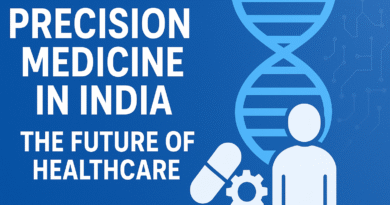Organoids, Bioprinting, and Regenerative Medicine
Title: Organoids, Bioprinting, and Regenerative Medicine: Shaping the Future of Healthcare
Introduction:
Modern medicine is undergoing a massive transformation. With breakthroughs in organoids, 3D bioprinting, and regenerative medicine, scientists are now creating living models of human organs and tissues in the lab. These innovations are helping researchers understand diseases more accurately, test new drugs safely, and even explore ways to grow transplantable organs in the future.
What Are Organoids?
Organoids are tiny, three-dimensional structures grown from stem cells that mimic the function and structure of real human organs. Often called “mini-organs”, they are used to study how diseases develop inside the body without the need for invasive procedures.
For example:
Brain organoids are used to study neurological disorders like Alzheimer’s and autism.
Tumoroids help cancer researchers understand tumor growth and test potential cancer therapies.
By using patient-derived organoids, scientists can create personalized models that represent a specific person’s genetic and biological makeup – a key step toward precision and personalized medicine.
3D Bioprinting: Building Living Tissues
3D bioprinting is another groundbreaking area in regenerative medicine. Similar to how a regular 3D printer works, bioprinters use special “bio-inks” made from living cells and biomaterials to print layers of tissue.
Researchers are already printing:
Skin tissues for burn patients
Cartilage for joint repair
Mini-organs for drug testing
The ultimate goal is to print functional, transplantable human organs like kidneys, hearts, and livers-to solve the global organ shortage crisis. This could revolutionize transplant medicine and save millions of lives worldwide.
The Role of Regenerative Medicine
Regenerative medicine focuses on repairing, replacing, or regenerating damaged cells, tissues, and organs. Combining organoids and bioprinting technologies makes this field more powerful than ever.
Together, they offer:
Personalized treatments tailored to individual patients
Drug testing platforms that eliminate harmful side effects
Reduced animal testing, leading to more ethical research
As tissue engineering and stem cell research advance, the dream of regenerating damaged hearts, kidneys, and nerves is slowly becoming a reality.
Future Prospects and Challenges
Despite rapid progress, challenges remain — such as ensuring organoids fully mimic human biology and creating large, functional tissues with blood vessels. However, with continuous research, advanced biomaterials, and AI-powered modeling, these hurdles are gradually being overcome.
The integration of AI, bioprinting, and stem cell technologies marks the dawn of a new era in biomedical innovation.
Conclusion
The combination of organoids, 3D bioprinting, and regenerative medicine is redefining healthcare and human biology. From personalized drug testing to future organ transplants, these technologies hold the potential to extend and improve human life.
The future of medicine is not just about treating disease, it’s about rebuilding life from the ground up.




